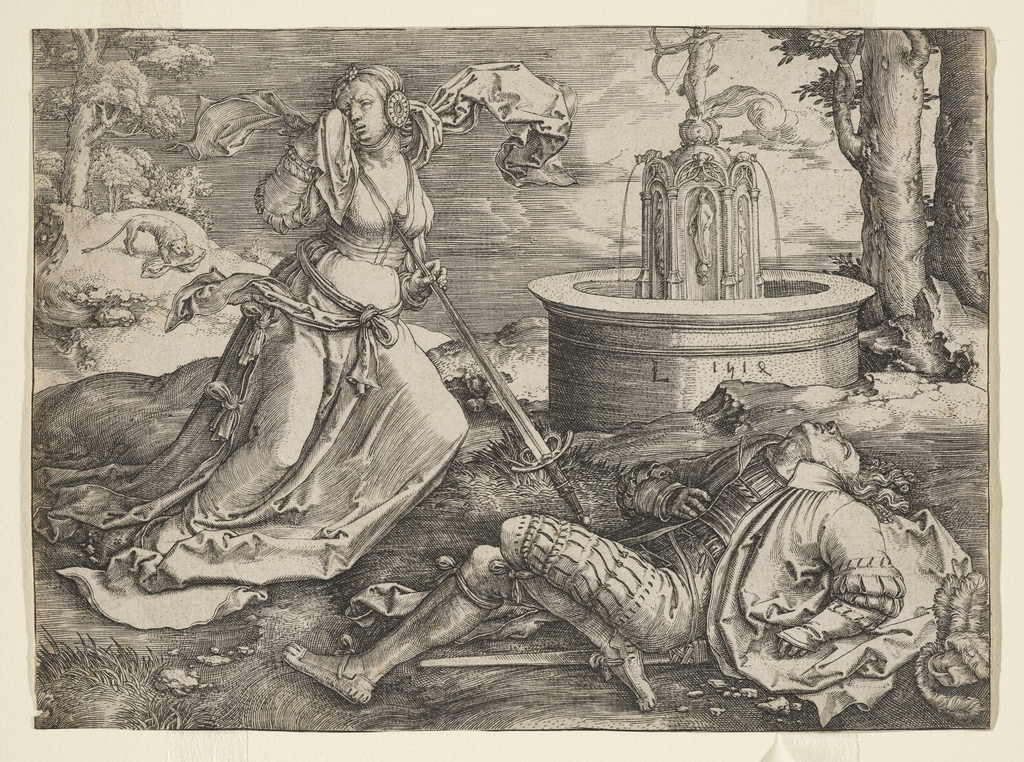Romeo and Juliet’s story is known across the world, but what about the tale that serves as the foundation for Shakespeare’s work? Ovid’s Metamorphosis tells the tale of Pyramus and Thisbe; like Romeo and Juliet, these two were young lovers forbidden to wed because of a long-standing rivalry between their families. Their love grew through a crack in a wall which the families’ homes shared. Through the wall the young couple exchanged hushed vows of devotion and plotted their elopement.
On the night that they hoped to run away together, their story met a tragic end. The couple planned to meet under a mulberry tree. Upon arriving at the meeting place Thisbe encountered a lion with a bloodied mouth, fresh from a recent kill. Thisbe ran away in fear, losing her veil in the process. Pyramus arrived shortly after this exchange and was overcome by what he saw: the lion and Thisbe’s veil. Pyramus, assuming Thisbe was the lion’s victim, took his own life by his sword. Thisbe returned to the meeting place to find Pyramus dead. She stabbed herself with the very same sword which took her true love.
If the viewer was unaware of the tale being told in van Leyden’s work, the artist provides details that allow the narrative to unfold. At the front we see the young lovers in the throes of death; their status as lovers is reinforced by the cupid at the top of the fountain with his bow and arrow pulled taught and aiming directly at Thisbe. Her head wrap is thrown up in the air as she rushes to see Pyramus. If we look to the back left we see their fateful meeting place under the mulberry trees; the lion – veil in mouth – appears here. Van Leyden artfully portrayed the story of Pyramus and Thisbe through this multi-layered scene.
Julia Pelkofsky is a Master’s Fellow in the Department of Drawings, Prints & Graphic Design at Cooper Hewitt, Smithsonian Design Museum. She is currently working on her MA in the History of Decorative Arts and Design at Parsons, the New School for Design.
